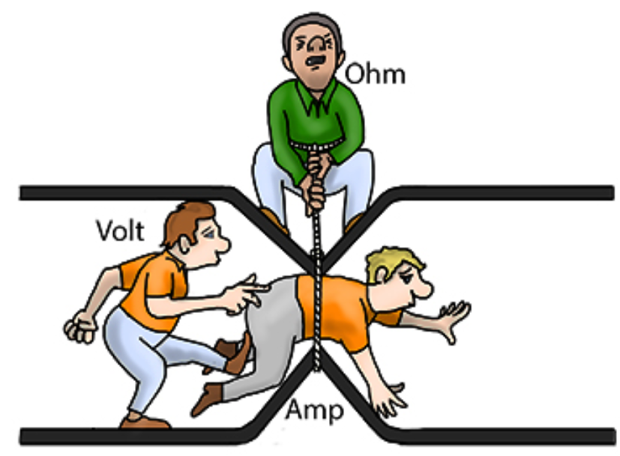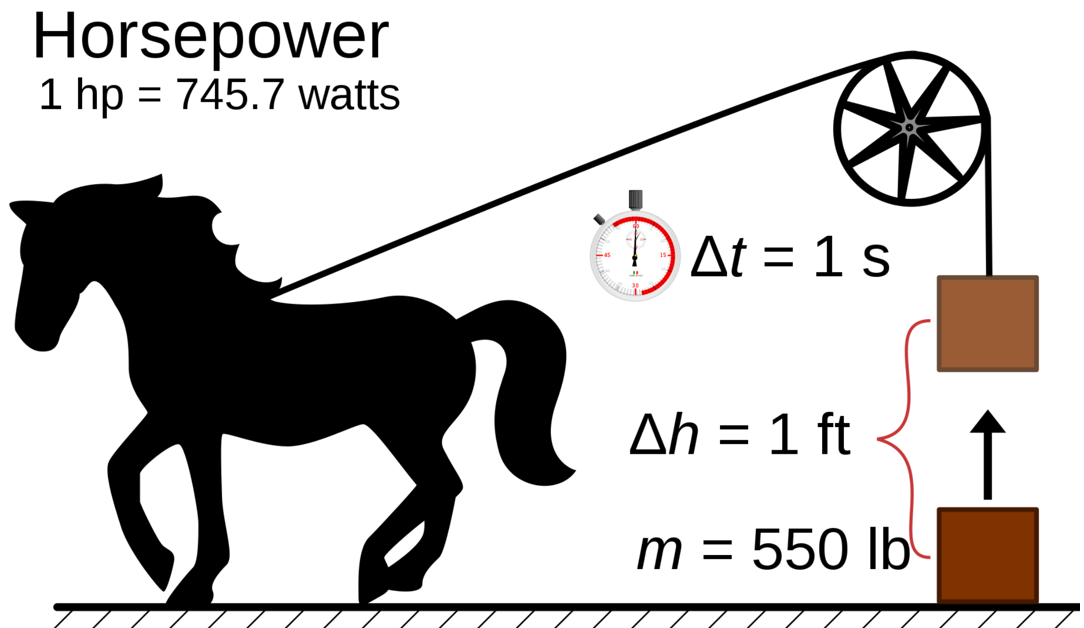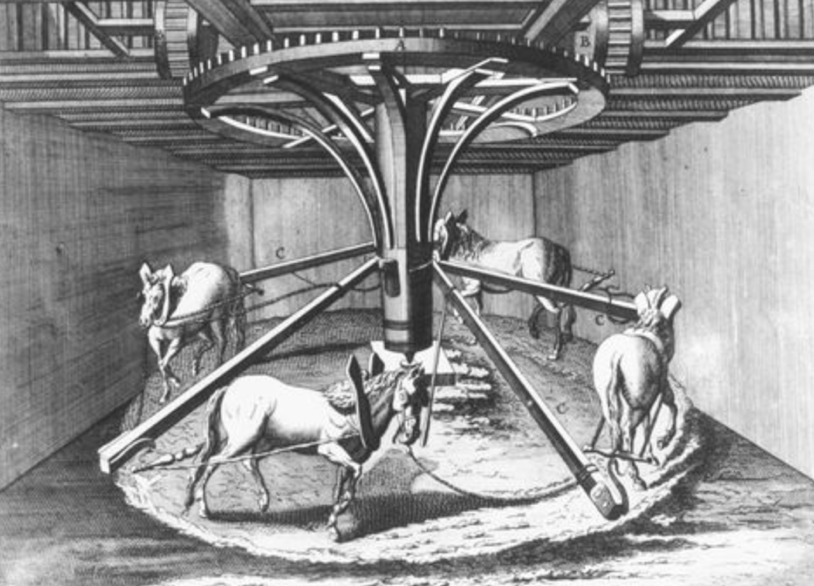About Electric Propulsion, Part 2: Electricity: Volts, Amps, Watts

A Tutorial on Electrical Propulsion for Boats.
Volts, Amperes and Watts are examples above are all explanations of mechanical energy, things moving in space. Electrical energy has its own measurements, which are intertwined with these units of mechanical energy. The three basic electrical energy terms you need to know are Volts, Amperes (amps) and Watts.
Volts (denoted as V) are the units used to measure electrical energy. To be precise, Volts measure electric potential. Electric potential is how much electric energy is capable of moving from one point to another – that idea of ‘the ability to do work’ applied to electricity. It’s not an exact analogy, but if you think of electricity as water, voltage is the water pressure.

Amps (denoted as A) are the units used to measure the flow of the energy. If voltage is the water pressure, imagine a meter on the water pipe that measures how much water, how many water molecules, are passing by a point on the pipe at any one time. With electricity, the meter is measuring the individual electric charges that are going through a wire, and the flow, the current, is measured in Amps.
Watts (denoted as W) is used to measure the electric power. Watts are the units used to measure both electrical power and mechanical power. A Watt is the unit of electrical power equal to one ampere under the pressure of one volt. One Watt is a small amount of power.
A 60-Watt light bulb uses 60 Watts per hour or 60 Joules of energy. That is .06 kiloWatts per hour.
This comes in handy when trying to figure out how fast and far the electrical energy from a battery can move a boat.

In terms of your boat, the energy is stored in your battery, that electrical energy is transferred to mechanical energy — the motor and drive train and propeller — which put force against the water to do the work of moving your boat. As we said, higher speed and/or bigger weight require more power transferred from electrical energy to mechanical energy — all measured in the same Watts.
We know the formula for mechanical power is Power = Work ÷ Time. There is also a specific formula for calculating electrical power: Watts = Volts x Amps.

To be clear, a watt is a watt is a watt, it doesn’t matter if it is measuring the rate of work of electrical power or mechanical power or if it is being exerted by an electric motor or fossil fuel motor, steam motor, or hand cranked.
With electric boats, since the power of the batteries and the power of motors are both measured in Watts, it is fairly simple to match a battery with a motor and also figure out how much work it will be able to do for what amount of time.
A kiloWatt is 1,000 Watts
A Watt is the amount of work one Joule of energy can perform in one second, which is not much. Individual Joules and Watts are small. To give you an idea of how small a Joule is, a common unit of energy we all use is the food calorie, and a joule is about 1/4000th of a calorie – 4,184 Joules in a calorie. You burn about 2,000 calories a day, so you burn about 8,368,000 Joules a day (congratulations)
Because a Watt’s energy is so small, we often use kiloWatts to refer to any sizable amount of power. A kiloWatt (denoted as kW) is the work that one thousand Joules can do in one second.

How Much Horsepower?
Many people are used to the term horsepower when talking about boat engines. And, during this transitional time between ICE (internal combustion engines) power and electrical power, boaters will naturally want to know the equivalent horsepower of the electric motor. The answer is 1 kiloWatt is equal to 1.34 horsepower.
So, for an electric motor to produce 100-hp it must be continuously rated at 134 kiloWatts. The converse is a 100-kW motor has about 74.6-hp.
However, if you are going to be looking at or using an electric boat, I think you would be well advised to forget about horsepower and think only in terms of Watts, or even better, kiloWatts. In case you haven’t noticed, more and more engine companies the last 10 years or so, have been giving their power ratings in both horsepower and kiloWatts. The term “horsepower” will soon go the way of, well, the horse and buggy.